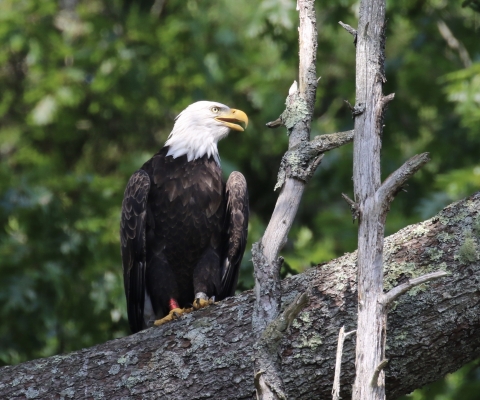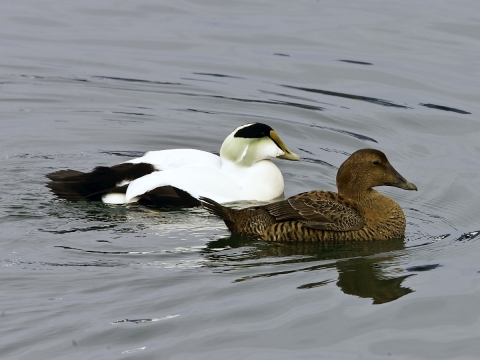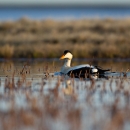Featured Species
Bald Eagles are primarily fish eaters at inland settings on the lakes and rivers. In coastal estuaries and offshore islands, they eat a more varied diet adding seabirds and waterfowl. Eagles will perch along shorelines waiting for prey to come by.
The Razorbill Maine threatened species; short stocky seabird with black back, head, and upper wings; white body; deep bill with white vertical line on adult. It is the closest living relative of the extinct great auk. Wild populations live in the subarctic waters of the Atlantic Ocean. With the exception of the breeding season, Razorbills re-main on the water and spend winters on open ocean; they use wings to propel themselves underwater in pursuit of herring, hake, and sand lance; reach southern limit of breeding distribution in Maine; nest under rocks or boulders, often observed sitting on the water.
Common eiders are the largest duck in the northern hemisphere. They are especially conspicuous since they tend to nest in large colonies on coastal islands. Breeding season runs from late April to mid-August. During the non-breeding season, eiders form large aggregations along coastal areas from the Gulf of St. Lawrence and Newfoundland south to Virginia.






